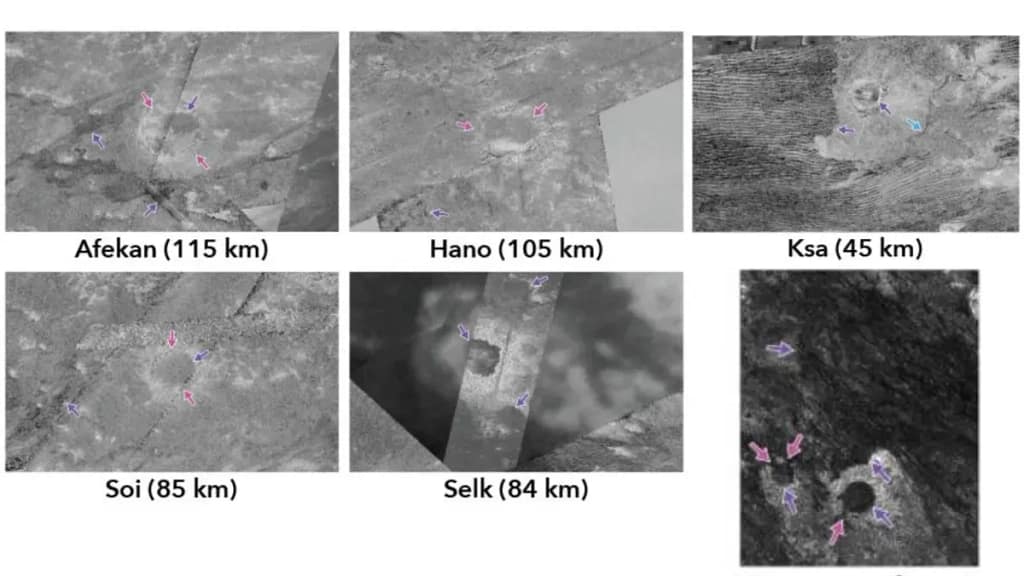A 6-mile-think shell of methane ice on Saturn’s moon Titan could assist in the hunt for life signs arising from this moon’s vast subsurface ocean.
Researchers have found that Titan, Saturn’s largest moon, may have an insulated layer of methane ice beneath its icy crust that is six miles (9.7 kilometers) deep. Ironically, this layer might make it simpler to find evidence of life from Titan’s subterranean ocean. Additionally, the discovery may help combat the global warming caused by human activity.
Titan is more like Earth than any other planet in the solar system, despite being a moon. This is because, aside from Earth, it is the only planet or moon in the solar system to have liquid rivers, lakes, and seas in addition to an atmosphere. However, due to Titan’s extremely cold temperatures, this liquid is made up of hydrocarbons such as ethane and methane. Nevertheless, water does make up Titan’s surface ice.
Methane gas may also be trapped behind Titan’s ice shell, creating a unique crust up to six miles thick, according to recent findings from a team of planetary scientists at the University of Hawaii at Mānoa. By warming Titan’s underlying ice shell, this gas may let molecules—some of which may be signs of life—rise to the surface. Titan’s atmosphere is rich in methane, which could potentially be explained by this warming.
According to a statement from Lauren Schurmeier, the leader of the research team and a scientist from the University of Hawaii, “any signs of life, biomarkers, would need to be transported up Titan’s ice shell to where we could more easily access or view them with future missions if life exists in Titan’s ocean under the thick ice shell.” If Titan’s ice shell is warm and connected, this is more likely to happen.
The discovery of shallow impact craters on Titan initially alerted the team to the possibility of this connecting layer of methane ice. The Saturnian moon’s surface has only revealed 90 impact craters, which have been difficult to see because they should be hundreds of feet deeper than they are.
This was rather unexpected since, according to Schurmeier, we would anticipate seeing a lot more impact craters on the surface and craters that are significantly deeper than what we see on Titan based on other moons. We came to the conclusion that Titan must have something special that causes it to become shallower and vanish really soon.
Investigating Titan’s shallow craters
Schurmeier and associates used computer modeling to further explore the riddle of Titans’ swallow impact craters. This gave researchers the opportunity to examine the extent to which an insulating layer of methane carbonate on the icy shell of Saturn’s largest moon might cause its surface to relax and rebound following an impact with an asteroid.
Methane clathrate, often known as “methane hydrate,” is a solid substance that resembles ice because a significant proportion of methane is trapped inside the crystalline structure of water.
The researchers could evaluate potential impact crater depths on the Saturnian moon by taking into account craters of a similar size on Ganymede, an icy moon of Jupiter that is equivalent to Titan.
Because simulations utilizing that thickness yielded crater depths that closest matched the observed craters, we were able to constrain the methane clathrate crust thickness to five to 10 kilometers [about three to six miles] using this modeling approach, Schurmeier continued. Crater shallowing occurs at a rate that is comparable to that of swiftly moving warm glaciers on Earth due to the methane clathrate crust’s ability to warm Titan’s interior and induce astonishingly quick topographic relaxation.

Titan impact craters captured by Cassini SAR (synthetic aperture radar). Dunes and sands (purple), channels (blue), and substantial crater rim erosion (pink) are examples of arrows that show possible crater modification processes. (Photo courtesy of Cassini/NASA)
This methane icy shell’s thickness is important because it may one day help to explain Titan’s atmosphere’s very high concentration of this hydrocarbon. Additionally, it might aid in the understanding of Titan’s carbon cycle, its “hydrological cycle,” which is based on liquid methane, and the Saturnian moon’s shifting temperature.
According to Schurmeier, Titan is a natural laboratory for researching the warming and atmospheric cycles of the greenhouse gas methane. Methane is currently being released and destabilized by Earth’s methane clathrate hydrates, which are located beneath the arctic seafloor and in Siberia’s permafrost.